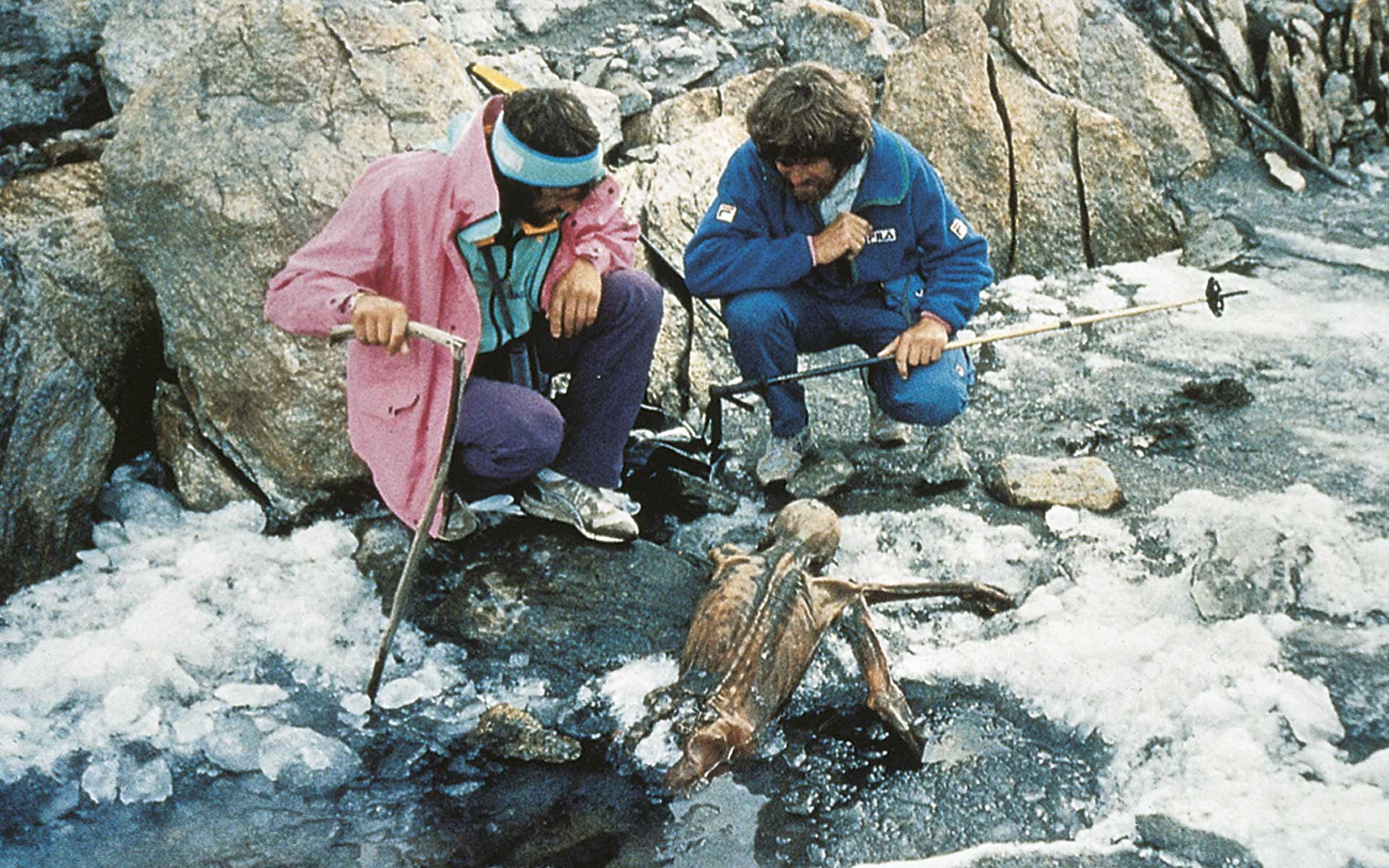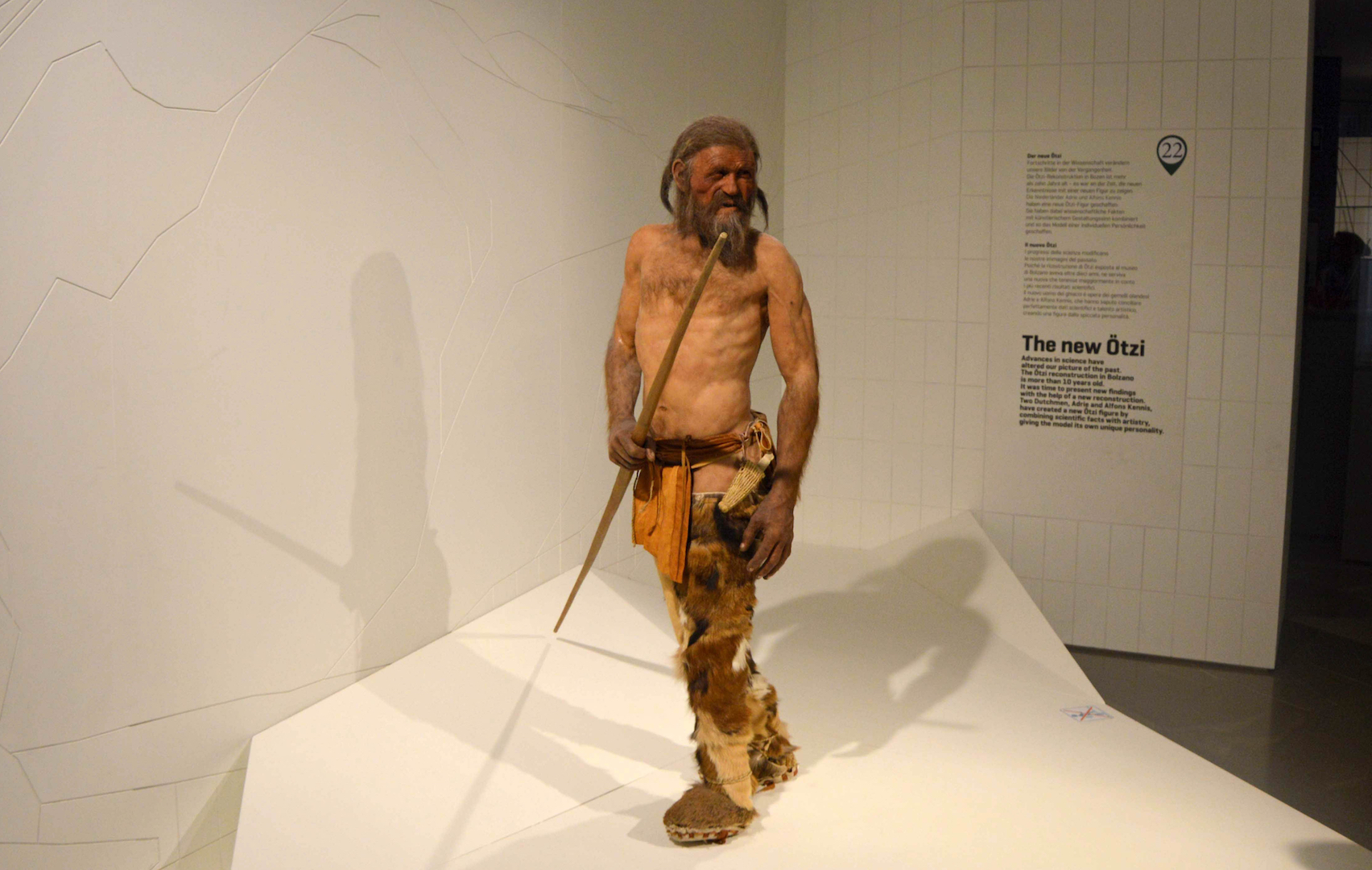Discovered in 1991 amid the icy expanse of the Ötztal Alps, on the Austrian-Italian border, Ötzi the Iceman is a natural mummy that has profoundly impacted the study of prehistoric life. Preserved for over 5,000 years, Ötzi offers an unparalleled window into the late Neolithic period, showcasing the ingenuity, resilience, and daily struggles of a bygone era.

The Discovery of Ötzi
The remarkable find was made by hikers Helmut and Erika Simon, who stumbled upon what they initially thought was the body of a modern mountaineer. However, subsequent analysis revealed the astonishing truth: the body belonged to a man who lived around 3400–3100 BCE. Encased in ice and naturally mummified, Ötzi emerged as one of Europe’s most extraordinary archaeological discoveries.

Ötzi’s Possessions: Tools and Clothing of a Survivor
Ötzi was discovered alongside a fascinating array of belongings that shed light on the technology and lifestyle of his time. His leather garments, fur-lined shoes, and bearskin cap were ingeniously crafted to endure harsh alpine conditions. A braided grass cape further enhanced his insulation, demonstrating the resourceful use of available materials.

Among his tools, the copper axe stands out as a technological marvel of the era, marking one of the earliest known uses of metallurgy. A flint dagger, bow, and quiver containing unfinished arrow shafts highlight his reliance on hunting for survival. The unfinished arrows suggest that he was on the move, possibly seeking safety or resources, at the time of his death.

The Enigma of Ötzi’s Tattoos
Ötzi’s body is adorned with 61 tattoos, consisting of lines and crosses etched into his skin and filled with charcoal powder. These tattoos were concentrated around his joints and spine, areas commonly afflicted by pain or stiffness. Experts theorize that the tattoos may have served therapeutic purposes, akin to an early form of acupuncture, offering a fascinating glimpse into prehistoric medical practices.
The Final Days: A Tale of Violence and Survival
The cause of Ötzi’s death has been pieced together through advanced forensic studies. A flint arrowhead was found embedded in his left shoulder, shattering his shoulder blade and severing major blood vessels. This injury alone would have been fatal. Additional trauma to his skull suggests he suffered a blow to the head, possibly during a fall or as part of an attack.

A deep cut on his right hand, sustained days before his death, indicates that Ötzi may have been involved in a violent encounter. These clues paint a vivid picture of a man navigating a world fraught with danger, where survival often demanded physical resilience and quick thinking.
Diet and Daily Life
Ötzi’s stomach contents revealed the last meal he consumed: a mix of grains, wild plants, fruits, and ibex meat. This diverse diet reflects a lifestyle reliant on foraging, hunting, and perhaps even early forms of agriculture. His diet and tools hint at a highly adaptable individual, capable of thriving in a challenging environment.

A Bridge to the Past
At the time of his death, Ötzi was around 45 years old, stood 160 cm tall, and weighed approximately 50 kg. His age and physical condition suggest a life shaped by both the demands of his environment and the inevitable wear of time. Using advanced imaging techniques, researchers have reconstructed his facial features, providing a deeply human connection to this ancient figure.

Legacy and Preservation
Today, Ötzi’s body and belongings are housed at the South Tyrol Museum of Archaeology in Bolzano, Italy. The museum offers visitors an extraordinary opportunity to explore the life and times of this prehistoric individual. Ötzi’s preservation has become a cornerstone of archaeological research, revealing details about early metallurgy, textiles, diet, and even medical practices.

Conclusion
Ötzi the Iceman stands as a remarkable testament to human ingenuity and endurance. His body, tools, and tattoos weave a narrative of survival and adaptability in a harsh and unforgiving world. As researchers continue to study his remains, Ötzi offers not only a vivid portrait of his era but also a reminder of humanity’s enduring quest to understand our shared past.

